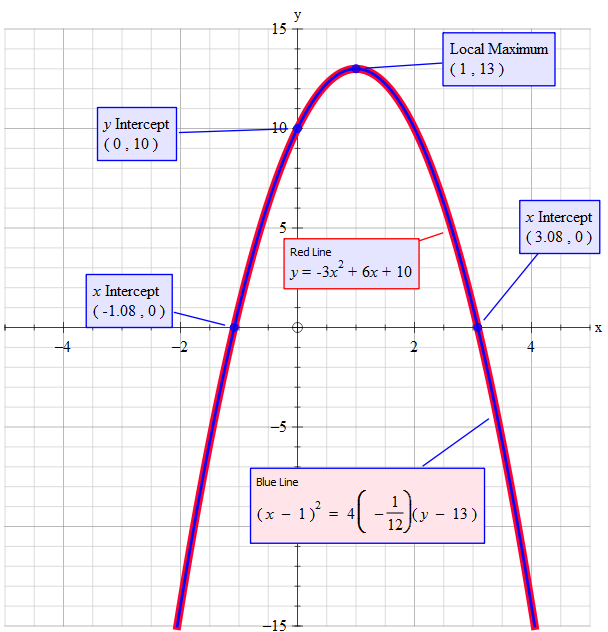As long as you follow the basic rules of mathematics you can change any equation into other forms.
Note that the #(x-h)^2# part occurs when completing the square so lets have a play with that approach and see what we get.
Starting point:
Given:#" "y=-3x^2color(white)(.)+6x" "+10#
Write as: #" "y=-3(x^2+6/(-3)x)+10+k #
At this stage #k=0#
~~~~~~~~~~~~~~~~~~~~~~~~~~~~~~~~~~~~~~~~~~~~~~
#color(blue)("Step 1")" - halve the "6/(-3)x#
#"y=-3(x^2+6/(-3xx2)x)+10+k #
~~~~~~~~~~~~~~~~~~~~~~~~~~~~~~~~~~~~~~~~
#color(blue)("Step 2")" - remove the "x" from "6/(-3xx2)x#
#"y=-3(x^2+6/(-3xx2))+10+k #
but #6/(-3xx2)=-1# giving:
#"y=-3(x^2-1)+10+k #
~~~~~~~~~~~~~~~~~~~~~~~~~~~~~~~~~~~~~~~~~~~~~
#color(blue)("Step 3")# - move the exponent (power) outside the brackets
#"y=-3(x-1)^2+10+k #
Note that #-3(-1)^2+k=0# so #k=+3-># positive
#"y=-3(x-1)^2+13 #
~~~~~~~~~~~~~~~~~~~~~~~~~~~~~~~~~~~~~~~
#color(blue)("Step 4")# - move the 13 to the other side
#y-13=-3(x-1)^2#
~~~~~~~~~~~~~~~~~~~~~~~~~~~~~~~~~~~~~~~~~~~~~~~~~~
#color(blue)("Step 5")# - divide both sides by -3
#-1/3(y-13)=(x-1)^2#
~~~~~~~~~~~~~~~~~~~~~~~~~~~~~~~~~~
#color(blue)("Step 6")# - forcing the derived equation into the required format.
Target format: #" "(x-h)^2=4p(y-k)#
We have got the #(x-h)^2# part #->(x-1)^2#
We have got the #(y-k)# part #->(y-13)#
Set #-1/3=4p#
Divide both sides by 4 #=>p=-1/(3xx4)=-1/12#
Thus we have:#" "(x-1)^2=4(-1/12)(y-13)#



